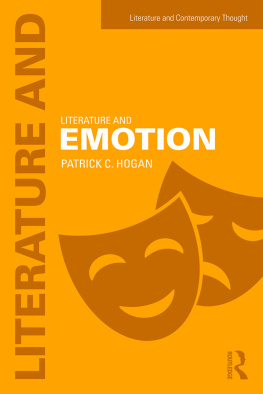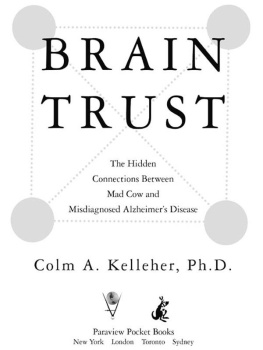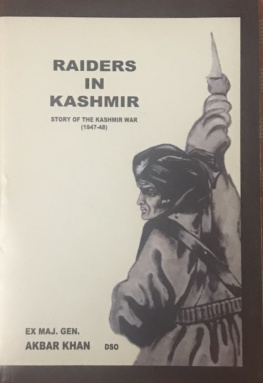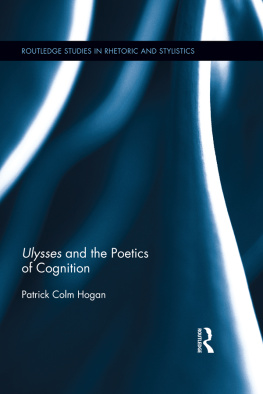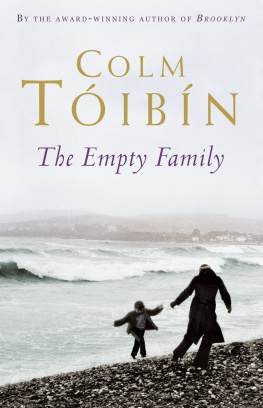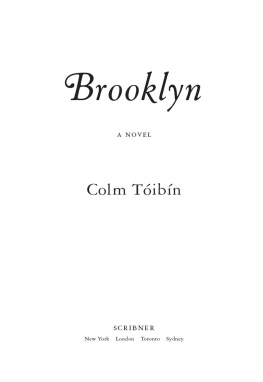Patrick Colm Hogan - Imagining Kashmir: Emplotment and Colonialism
Here you can read online Patrick Colm Hogan - Imagining Kashmir: Emplotment and Colonialism full text of the book (entire story) in english for free. Download pdf and epub, get meaning, cover and reviews about this ebook. year: 2016, publisher: UNP - Nebraska, genre: Politics. Description of the work, (preface) as well as reviews are available. Best literature library LitArk.com created for fans of good reading and offers a wide selection of genres:
Romance novel
Science fiction
Adventure
Detective
Science
History
Home and family
Prose
Art
Politics
Computer
Non-fiction
Religion
Business
Children
Humor
Choose a favorite category and find really read worthwhile books. Enjoy immersion in the world of imagination, feel the emotions of the characters or learn something new for yourself, make an fascinating discovery.

- Book:Imagining Kashmir: Emplotment and Colonialism
- Author:
- Publisher:UNP - Nebraska
- Genre:
- Year:2016
- Rating:5 / 5
- Favourites:Add to favourites
- Your mark:
- 100
- 1
- 2
- 3
- 4
- 5
Imagining Kashmir: Emplotment and Colonialism: summary, description and annotation
We offer to read an annotation, description, summary or preface (depends on what the author of the book "Imagining Kashmir: Emplotment and Colonialism" wrote himself). If you haven't found the necessary information about the book — write in the comments, we will try to find it.
Imagining Kashmir: Emplotment and Colonialism — read online for free the complete book (whole text) full work
Below is the text of the book, divided by pages. System saving the place of the last page read, allows you to conveniently read the book "Imagining Kashmir: Emplotment and Colonialism" online for free, without having to search again every time where you left off. Put a bookmark, and you can go to the page where you finished reading at any time.
Font size:
Interval:
Bookmark:
This is an exciting and important book that has no equal in the field. It will be of interest to a range of scholars who work on Kashmir, postcolonialism, cognitive approaches to culture, and conflict resolution. SOPHIA M c CLENNEN , professor of comparative literature and international affairs at Pennsylvania State University
A valuable contribution to colonial/postcolonial literary studies as well as cognitive cultural studies. NANCY L. EASTERLIN , professor of womens studies and gender studies at the University of New Orleans
Imagining Kashmir
Frontiers of Narrative
SERIES EDITOR
Jesse E. Matz, Kenyon College
| Imagining Kashmir |
Emplotment and Colonialism
PATRICK COLM HOGAN
University of Nebraska Press | Lincoln and London
2016 by the Board of Regents of the University of Nebraska
Acknowledgments for the use of copyrighted material appear in , which constitutes an extension of the copyright page.
Cover designed by the University of Nebraska Press
All rights reserved.
Library of Congress Cataloging-in-Publication Data
Names: Hogan, Patrick Colm.
Title: Imagining Kashmir: emplotment and colonialism / Patrick Colm Hogan.
Description: Lincoln: University of Nebraska Press, 2016. | Series: Frontiers of narrative | Includes bibliographical references and index.
Identifiers: LCCN 2015043972| ISBN 9780803288591 (cloth : alkaline paper) | ISBN 9780803294875 (epub) | ISBN 9780803294882 (mobi) | ISBN 9780803294899 (pdf)
Subjects: LCSH : English literatureMinority authorsHistory and criticism. | Politics and literatureHistory. | Motion picturesPolitical aspectsHistory. | Kashmir, Vale of (India)In literature. | Kashmir, Vale of (India)In motion pictures. | Narration (Rhetoric)Political aspects. | Narration (Rhetoric)Psychological aspects. | Colonies in literature. | Colonies in motion pictures. | Kashmir, Vale of (India)Ethnic relationsHistorySources.
Classification: LCC PR 120. M 55 H 64 2016 | DDC 820.9/920693dc23 LC record available at http://lccn.loc.gov/2015043972
All illustrations in this volume are taken from Kashmir Pending , Phantomville, 2007. Reprinted by permission of the publishers.
The publisher does not have any control over and does not assume any responsibility for author or third-party websites or their content.
This book is dedicated to the author of Shalimar the Clown .
Contents
An earlier version of were presented at the workshop Conveying Emotion and Cognition in Narratives: Self-Description as a Means of Shaping Identity (Heidelberg, 2012) and at the Modern Language Association convention (Boston, 2013). I am grateful to the organizers and participants for their comments and suggestions.
The panels from Kashmir Pending are reprinted with the kind permission of the publishers, Sarnath Banerjee and Anindya Roy.
Thanks to Colin Neary for hunting down an important reference; to Sophia McClennen for support, illuminating discussion, and valuable suggestions; to Shabir Mirza for help with identifying some images; to Noam Chomsky for comments on the policy suggestions presented in the afterword; to Jesse Matz for helpful comments and suggestions and for his very valuable work as series editor; and to Kristen Elias Rowley for generosity and editorial expertise.
Why Kashmir?
Kashmir is an important topic today primarily because of the great human tragedy that has been unfolding thereintensively over the past twenty-five years and, in a more attenuated form, for decades before that. Seema Kazi reports that at the time she was writing (in 2008), the death toll was estimated at 80,000100,000 (xi; the numbers vary, as shown by the estimate of 70,000 cited by Waheed [305] in 2011). Kashmir had become the most heavily militarised region in the world (Kazi 85); in 2004, there was one soldier for every ten civilians (Kazi 97). The suffering of the people is only partially revealed by the death tolls. The conditions of life itself have been suffocating. Consider, for example, The imposition of indefinite twenty-four hour curfews in Srinagar during the early 1990s, for months on end, which made it impossible for ordinary citizens to buy daily supplies, [and] prevented those needing medical attention from reaching a hospital, among other debilitating consequences (Kazi 100). The populace has been terrorized by both the military (who are largely immune from prosecution [see Kazi 98 and 105] and therefore have little reason not to act cruelly on the basis of anger or fear) and the militants, who are of course not subject to ordinary laws. Moreover, the vast majority of the Indian military and a large percentage of the militants (Swami estimates over a third [194]) are not Kashmiri. In consequence, they often treat Kashmiri people as enemies, though both the soldiers and the militants are putatively fighting on behalf of the Kashmiri people.
The ethnic and linguistic difference just mentioned is related to the nature of the conflict. As Kazi explains, According to an independent poll conducted in the Kashmir Valley in 1995, 72 per cent of respondents were in favor of independence (103). A 2010 poll showed 66 percent favoring independence (Two Thirds). A poll from 2009 (published in 2010) put the desire for independence in the valley at 7495 percent by district (Bradnock 16; for a summary of the report, see Kashmir Mulls), with the desire for merger with Pakistan ranging from 2 percent to 7 percent (17) and that for merger with India ranging from 2 percent to 22 percent (16). But it seems unlikely that the people will have self-determination. They are currently caught between what are in effect two colonialist powersIndia and Pakistan. Almost no one who has any authority seems to take seriously the idea of Kashmiri independence. The real options seem to be incorporation into Pakistan or continued incorporation into India, perhaps with some degree of regional autonomy.
This international aspect to the Kashmir issue has two components, both with further consequences. First, there is the bilateral, state conflict between India and Pakistan. This poses a global danger due to the fact that both India and Pakistan are nuclear powers and have fought three wars over Kashmir. As Wajahat Habibullah notes, Kashmir is widely recognized as a possible nuclear flash point (3). The second international aspect to the Kashmir issue bears on jihdi movements, such as al-Qaeda. In the Muslim world, and particularly among militants, Kashmir is widely seen as a prime instance of the oppression of Muslims and threat to the ummah , or community of faith. In this way, the situation of Kashmir is not entirely unlike that of Afghanistan in the 1980s. The intensity of the militant Islamist commitment to Kashmir may be less, but it is of the same general sort. As such, it has the potential to expand beyond Kashmir, not only to other parts of India (as has repeatedly occurred), but elsewhere as well. Indeed, these two aspects of internationalization are interrelated as the Pakistani secret service has repeatedly supported jihdi groups as part of their conflict with India (see Swami; Jamal; and Tankel). This has, in turn, caused problems for Pakistan, which has suffered violent attacks from some of the fundamentalist groups it has nurtured (see Tankel 18992). Stephen Tankel claims that one such group, Lashkar-e-Taiba (Army of the Pure) threaten[s] the US and its Western allies at home and abroad (266).
However, the following chapters are not a sociological, political, military, or historical discussion of the situation in Kashmir. They bear on literature and film or, more broadly, imagination. As such, they point to another way in which Kashmir merits our attention. Kashmir is not only a politically consequential region. It is a region with narrative importance as well importance in stories. This, too, has two aspects. First, and perhaps most obviously, Kashmir has been the topic of stories from ancient times to the present. In modern India, it has been a repeated focus of attention in film, particularly, where it is highly romanticized for its physical beauty (a point stressed by writers such as Kabir). More generally, Kashmir has had a prominent place in the imagination of South Asian people. As almost every author writing on Kashmir points out, it is widely represented as a paradise on earth, most famously in Emperor Jahangirs statement about the valley, If there is a paradise on earth, it is this; it is this; it is this (see, for example, Douglas). Part of this imagination has been social as well. Kashmir has been envisioned as a place of unusual harmony between Hindus and Muslims, and thus a source of optimism for social peace and friendship. For example, after the murderous terrors of partition, when roughly one million people lost their lives in religious violence (see Wolpert 348), Mahatma Gandhi asserted that in an India which had become dark all round, Kashmir was the only hope (Bamzai 669; however, see Puri on religious polarization and communal killings in Jammu and Kashmir outside the Kashmir Valley proper [23]). Since the beginning of the insurgency in 1988, this image of Kashmir has of course changed. But the valley remains an object of intense imaginative interest in a range of narratives directed at a variety of audiences.
Next pageFont size:
Interval:
Bookmark:
Similar books «Imagining Kashmir: Emplotment and Colonialism»
Look at similar books to Imagining Kashmir: Emplotment and Colonialism. We have selected literature similar in name and meaning in the hope of providing readers with more options to find new, interesting, not yet read works.
Discussion, reviews of the book Imagining Kashmir: Emplotment and Colonialism and just readers' own opinions. Leave your comments, write what you think about the work, its meaning or the main characters. Specify what exactly you liked and what you didn't like, and why you think so.

